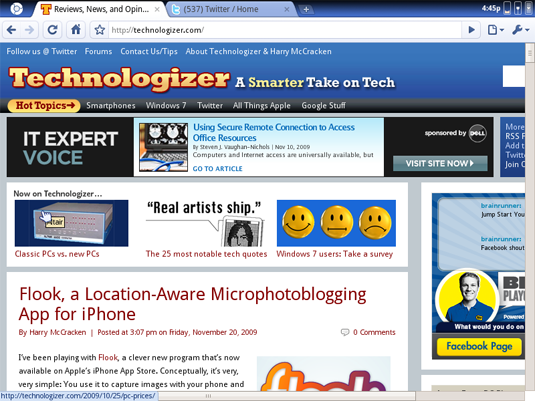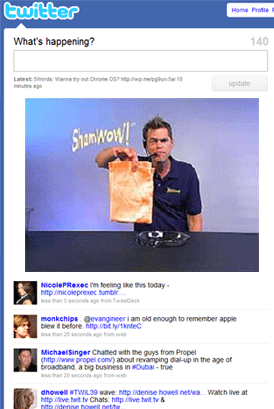 Microsoft wants Silverlight to be optimized for every platform that it runs on, said Brian Goldfarb, director of developer and user experience platforms at Microsoft, during an interview at the company’s Professional Developers Conference (PDC) on Wednesday (Nov. 18).
Microsoft wants Silverlight to be optimized for every platform that it runs on, said Brian Goldfarb, director of developer and user experience platforms at Microsoft, during an interview at the company’s Professional Developers Conference (PDC) on Wednesday (Nov. 18).
Silverlight runs on Mac OS X and Windows; it is available on Linux through Mono Moonlight, an open source project that Microsoft supports. I also expect that Moonlight will be running on Android in near future. Goldfarb explained that it was not enough for Silverlight to “run everywhere,” but that it should “light up” specific platforms.
Microsoft needs to consider screen size and other aspects of a device, which is particularly relevant in the mobile space, he explained. There are also mobile platform features such as SMS, phone dialing, and address books that Silverlight could exploit, he added. That would allow Silverlight applications to be customized for smartphones.
Silverlight 4, which Microsoft announced at PDC, will allow applications to access Windows features, hardware, and the local file system. That allows devices such as Webcams to accessed by Silverlight. However, the same level of optimization is not currently being offering for other platforms.
Microsoft will give Silverlight “trusted” access local resources on Macs, meaning that all features work except for COM integration, Goldfarb said. More work is needed to extend Silverlight for non-Windows platforms, Goldfarb admitted, saying that the company was “thinking around” the concept of extensions.
COM is a Windows technology that enables applications that may have been written in different languages to communicate with each other. Microsoft Office makes heavy use of COM. “We are actively evaluating the best way to get COM like features on other platforms,” Goldfarb wrote in a follow up e-mail.
To that end, the company has started an open source project called Managed Extensibility Framework for .NET and Silverlight. The Mono team is working on an equivalent project, Goldfarb said. He expects that Mono will “accelerate dramatically” in the near future, delivering more features to Linux users.
I expect that anything but Windows will be a second-class Silverlight citizen for some time. But Microsoft is making strides toward delivering an optimized experience on other platforms, and in doing so, will gain a foothold on the Web beyond Windows.
 Computers: The Heart of the 1980s Home
Computers: The Heart of the 1980s Home
 When Roku
When Roku  Microsoft wants Silverlight to be optimized for every platform that it runs on, said Brian Goldfarb, director of developer and user experience platforms at Microsoft, during an interview at the company’s Professional Developers Conference (PDC) on Wednesday (Nov. 18).
Microsoft wants Silverlight to be optimized for every platform that it runs on, said Brian Goldfarb, director of developer and user experience platforms at Microsoft, during an interview at the company’s Professional Developers Conference (PDC) on Wednesday (Nov. 18).

 I’ve been playing with
I’ve been playing with  ‘m at TechCrunch’s Real-Time CrunchUp, an interesting conference in San Francisco on the booming subject of Web sites and services that move just as fast as the rest of the world does–Twitter, some aspects of Facebook, and lots more. The first session this morning was a conversation between TechCrunch’s Mike Arrington and Twitter’s COO, Dick Costolo. And Costolo said that
‘m at TechCrunch’s Real-Time CrunchUp, an interesting conference in San Francisco on the booming subject of Web sites and services that move just as fast as the rest of the world does–Twitter, some aspects of Facebook, and lots more. The first session this morning was a conversation between TechCrunch’s Mike Arrington and Twitter’s COO, Dick Costolo. And Costolo said that 